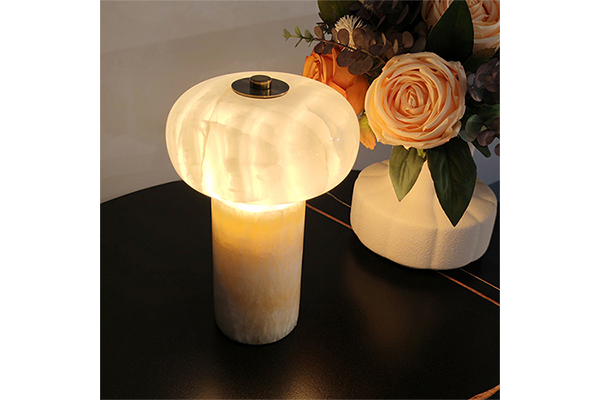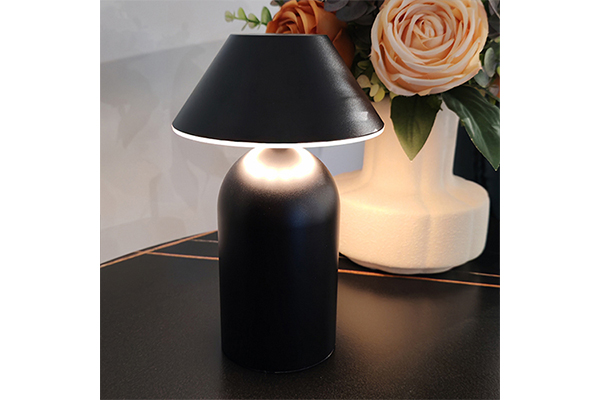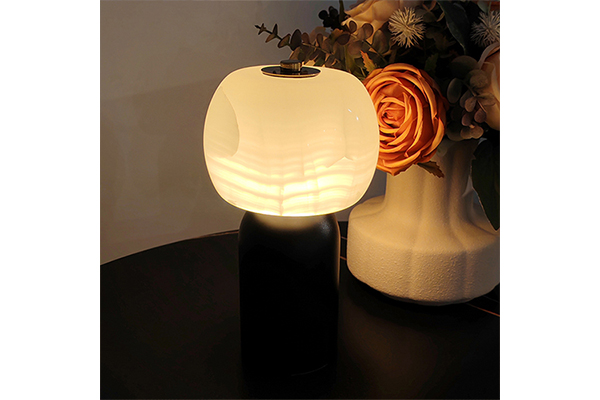Can wooden lamps enhance the warmth and intimacy of a space?
Release Time : 2025-11-11
In modern restaurant and hotel space design, lighting has long transcended its function as basic illumination, becoming a key medium for shaping atmosphere, conveying emotions, and constructing experiences. Among the many light sources, wooden lamps, with their natural materials, soft light, and warm texture, have quietly become the finishing touch in creating a sense of "warmth" and "intimacy." Whether it's a private booth in a high-end restaurant or a bedside table in a boutique hotel room, a carefully selected wooden lamp can often subtly shorten the distance between people and the space, evoking a sense of comfort and homecoming.
1. Natural Wood: An Emotional Carrier that Awakens Sensory Resonance
Wood is one of the earliest natural materials that humans have come into contact with and used. Its texture, color, and feel have long been integrated into our collective memory. In modern buildings constructed of reinforced concrete, the appearance of wooden elements itself carries a metaphor of "returning to nature." The wood used for table lamps—such as walnut, oak, cherry, or bamboo—not only possesses unique annual ring textures and a warm luster, but also exudes a subtle woody fragrance. This multi-sensory synergy effectively alleviates the tension of urban dwellers. In restaurants, wooden lamps placed beside dining tables or in bar corners, their irregular wood grain and soft contours breaking the coldness of industrial products; in hotel rooms, they replace cool-toned metal lamps, making the space more homey. Psychological research shows that natural materials can significantly increase people's "affinity" rating of their environment, and wooden lamps are a concrete manifestation of this principle.
2. Soft, Diffuse Light: Creating an Intimate and Unobtrusive Lighting Atmosphere
Wooden lamps typically use a semi-transparent lampshade paired with a warm-color-temperature LED light source. The light, reflected by the wooden base and filtered by the lampshade, forms low-glare, high-color-rendering diffused light. This light is not glaring, yet sufficient to illuminate book pages, menus, or coffee cups, creating a visual experience of being "gently enveloped." In restaurant settings, wooden lamps at table height serve as accent lighting, avoiding facial shadows caused by overhead lights and making diners' expressions clearer and food colors more appealing, thus promoting social interaction. In hotel lobbies or lounge areas, groups of wooden lamps create a richly layered lighting environment, guiding guests to sit naturally and relax for conversation. This "warm light" is a human touch that cold electronic screens cannot replace.
3. Design Integration: Strengthening Brand Tone and Spatial Narrative
For restaurants and hotels that emphasize the experience economy, every detail tells a story. Wooden lamps, due to their versatility, can present the minimalist lines of Scandinavia, the rustic beauty of Eastern Zen, and the ruggedness of retro industrial style. Designers can use wood type, proportions, and surface treatments to echo the overall spatial theme. For example, a restaurant specializing in "wild mountain cuisine" uses unpolished wooden lamps to emphasize the authenticity of the ingredients; a boutique city hotel uses lamps combining dark walnut wood and brass to convey understated luxury. This high degree of customization makes wooden lamps not just lighting tools, but also an integral part of spatial aesthetics, further enhancing guests' emotional connection to and memorable experiences.
In conclusion, the reason wooden lamps effectively enhance the warmth and intimacy of restaurants and hotels stems from the natural appeal of their materials, the emotional impact of their light, and the cultural expressiveness of their design. They don't overshadow the space, but quietly create a micro-environment that invites people to linger, interact, and reflect. In an era that values human-centered experiences, a good lamp speaks louder than words—and wooden lamps are precisely that warm, "speaking" light.
1. Natural Wood: An Emotional Carrier that Awakens Sensory Resonance
Wood is one of the earliest natural materials that humans have come into contact with and used. Its texture, color, and feel have long been integrated into our collective memory. In modern buildings constructed of reinforced concrete, the appearance of wooden elements itself carries a metaphor of "returning to nature." The wood used for table lamps—such as walnut, oak, cherry, or bamboo—not only possesses unique annual ring textures and a warm luster, but also exudes a subtle woody fragrance. This multi-sensory synergy effectively alleviates the tension of urban dwellers. In restaurants, wooden lamps placed beside dining tables or in bar corners, their irregular wood grain and soft contours breaking the coldness of industrial products; in hotel rooms, they replace cool-toned metal lamps, making the space more homey. Psychological research shows that natural materials can significantly increase people's "affinity" rating of their environment, and wooden lamps are a concrete manifestation of this principle.
2. Soft, Diffuse Light: Creating an Intimate and Unobtrusive Lighting Atmosphere
Wooden lamps typically use a semi-transparent lampshade paired with a warm-color-temperature LED light source. The light, reflected by the wooden base and filtered by the lampshade, forms low-glare, high-color-rendering diffused light. This light is not glaring, yet sufficient to illuminate book pages, menus, or coffee cups, creating a visual experience of being "gently enveloped." In restaurant settings, wooden lamps at table height serve as accent lighting, avoiding facial shadows caused by overhead lights and making diners' expressions clearer and food colors more appealing, thus promoting social interaction. In hotel lobbies or lounge areas, groups of wooden lamps create a richly layered lighting environment, guiding guests to sit naturally and relax for conversation. This "warm light" is a human touch that cold electronic screens cannot replace.
3. Design Integration: Strengthening Brand Tone and Spatial Narrative
For restaurants and hotels that emphasize the experience economy, every detail tells a story. Wooden lamps, due to their versatility, can present the minimalist lines of Scandinavia, the rustic beauty of Eastern Zen, and the ruggedness of retro industrial style. Designers can use wood type, proportions, and surface treatments to echo the overall spatial theme. For example, a restaurant specializing in "wild mountain cuisine" uses unpolished wooden lamps to emphasize the authenticity of the ingredients; a boutique city hotel uses lamps combining dark walnut wood and brass to convey understated luxury. This high degree of customization makes wooden lamps not just lighting tools, but also an integral part of spatial aesthetics, further enhancing guests' emotional connection to and memorable experiences.
In conclusion, the reason wooden lamps effectively enhance the warmth and intimacy of restaurants and hotels stems from the natural appeal of their materials, the emotional impact of their light, and the cultural expressiveness of their design. They don't overshadow the space, but quietly create a micro-environment that invites people to linger, interact, and reflect. In an era that values human-centered experiences, a good lamp speaks louder than words—and wooden lamps are precisely that warm, "speaking" light.










